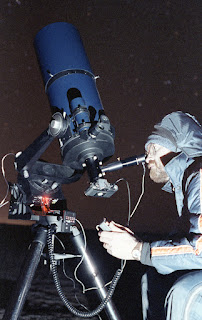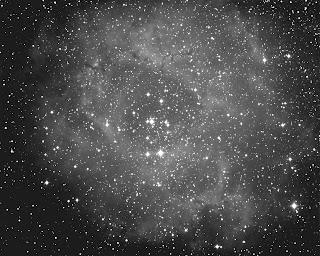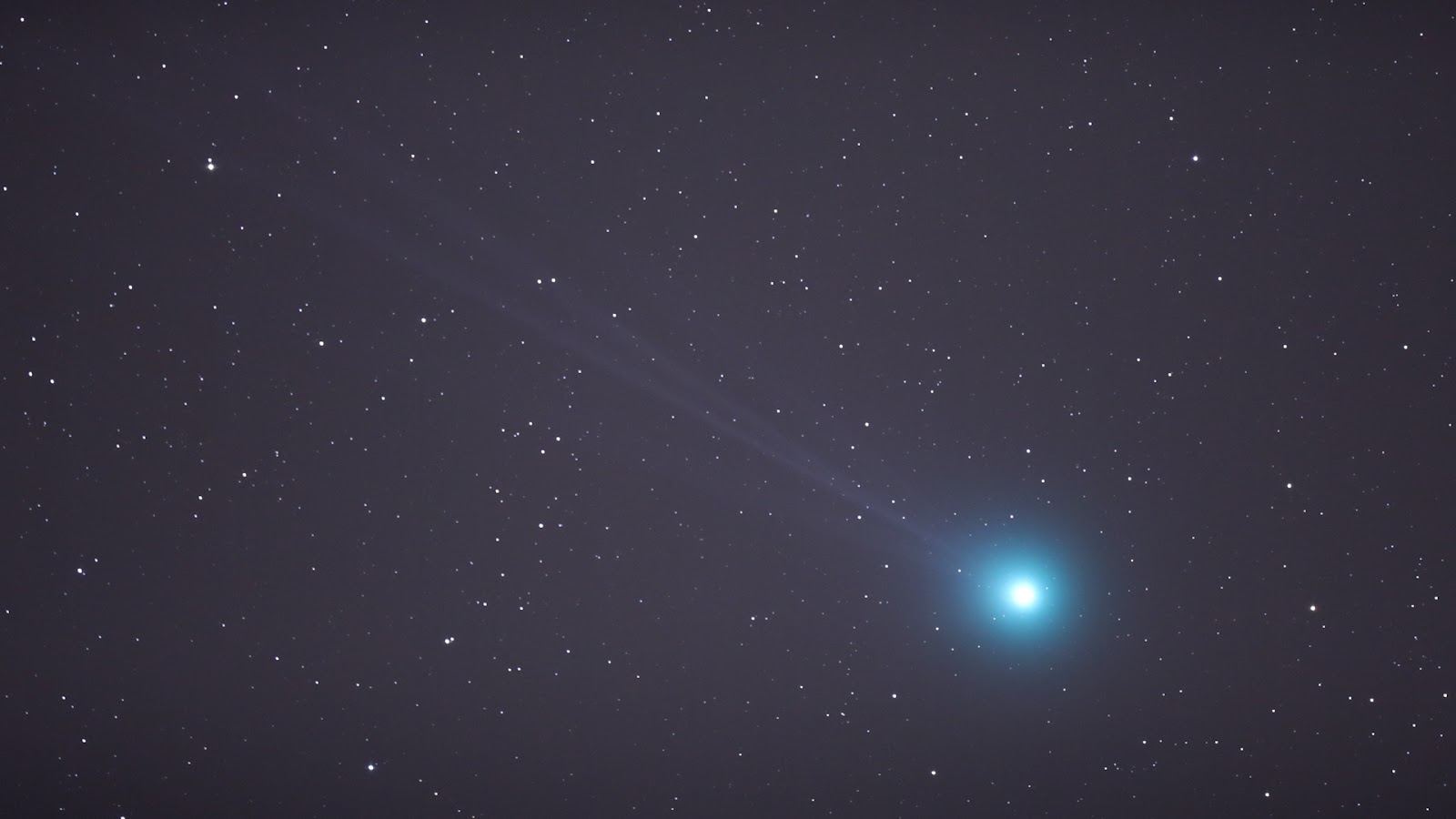In search of Schmidt-Camera-like performance
 |
| Meade Schmidt Camera Ad |
Just kidding.
Honestly, I loved my Meade 2080 LX3 for 20 years, despite its poor optical quality. Since I mainly used it for low-power astrophotography at f/6.3, I wasn't really bothered by the defects. It was only when I tried to resolve tight double stars or planetary detail at high power that I was met with disappointment. Meade was really in a bind over Halley's Comet in 1986. Everybody wanted a telescope to view the comet, so Meade and other telescope manufacturers cranked up their production. Their SCT optics were made by hand, and they hand-matched corrector plates to primary and secondary mirrors. To increase throughput and maximize their profits, they lowered their standard of optical quality. Some of their customers got excellent optics, I'm sure. But others, like me, got the bottom of the barrel.
Be that as it may, the mechanical and electronic quality was very good. And, of course, the aesthetic quality made it all worthwhile. It was a beautiful scope that I loved to show off. I was proud of it. More importantly, I got good results photographically.
In those days, both Meade and Celestron offered their SCTs in the f/10 variety, which was very slow in terms of astrophotography. And slow films like Kodak 400 made them practically useless for shooting the deep sky. The workaround for us astrophotographers was to buy a focal reducer and shoot at f/5 or f/6. For some reason, an f/6.3 focal reducer was very popular. And then film sensitivity increased and we eventually got pretty good results at f/6.3 with Konica 3200-speed film. It was a grainy film, but we didn't care. At some point, Meade offered an f/6 SCT, but it required increasing the size of the secondary mirror obstruction, which became a point of contention for many consumers. Thus, it was still advantageous to purchase the f/10 models and simply buy the focal reducer.
I enjoyed shooting at f/6.3 on fast film, but there were some large targets, like the California Nebula and comets, that demanded more field of view from the telescope and better sensitivity from the film. I really wanted one of those Schmidt Cameras that I saw in the Meade ads. There were a couple of astrophotographers who regularly submitted their Schmidt-Camera photos of comets and large deep-sky objects, taken with fine-grain films like the black-and-white Tech Pan 2415. See, for example, Sky & Telescope August 1986, pages 122 and 123. I wanted to be able to take pictures like theirs.
Frankly, it wasn't so much the price of Schmidt cameras that I couldn't afford, as it was the difficulty of using them that I found unacceptable.
Schmidt cameras were almost the same optical design as my SCT. Except they had no secondary mirror. The primary mirror was f/1.8 (very fast), and if you placed the film at the prime focus, you had a 4- to 8-inch aperture telescope that was faster than most camera lenses! The difficult part was that the film also had to be shaped like the spherical secondary mirror of a Schmidt-Cassegrain telescope! So, you would need to cut your negatives into little strips and put them in a curved film holder. And after being exposed, you'd have to retrieve those strips of film in total darkness and store them in total darkness until you got a chance to develop them in a darkroom. In those days, the 1-hour photo stores weren't equipped to take your film in the form of a bunch of tiny pieces and develop it. Thus, most Schmidt-camera users had their own darkrooms and processed their own negatives. That was something I had zero interest in doing!
What I wanted was a faster telescope without the need for doing my own film processing. And without the need to chop up my film. So, Schmidt cameras were not going to work for me. Instead, I looked around for telescopes with faster f/ ratios and smaller apertures, so that I could use the same camera I had already been using.
 |
| Chicago Optical 6-in RFT piggybacked onto my 8-inch Meade 2080 LX3 SCT. |
One such telescope caught my eye in the magazine advertisements. It was the Chicago Optical 6-inch RFT (rich-field telescope). With a focal ratio of f/4, it would be fairly fast and give a wide field of view for those large targets I was interested in.
In those days, people like me living out in the middle of nowhere didn't know how to find companies who made mounting rings for telescopes. If they didn't advertise in the two main astronomy magazines, we couldn't know about them. My local hardware store was where I bought supporting gadgetry for my telescope. So, after purchasing the 6-inch f/4 telescope, I paid a visit to the hardware store and bought some large hose clamps to use as mounting rings.
 |
| The end of a long night of astrophotography. |
I shot a few widefield targets, like the Pleiades and the North America Nebula, through the 6-inch but they didn't impress me. There were some flexure issues, it was hard to get the tube assemblies balanced, and the whole rig was too unwieldy to carry outside or load into the car if I wanted to drive to darker skies than what I had in my back yard. I loved how the scopes looked, though, and the field of view was pretty much exactly what I was looking for, but I had to admit defeat on this "Schmidt-Camera Alternative" endeavor. I ended up giving the 6-inch telescope to a friend as an upgrade to her 4-inch Newtonian.
 |
| The Pleiades, M 45, through the 6-inch RFT |
 |
| Yours truly with Meade 8-inch SCT and Astroscan |
 |
| Comet Levy in 1990 through the Astroscan. |
 |
| Guiding an exposure the old-fashioned way. |
That's right! We sat outside with the telescope all night long, peering into the guiding eyepiece and pushing buttons on the hand controller to push the star back into the center each time it wandered up, down, left, or right. Not only that, but our telescopes were not "Go-To" telescopes, so we had to aim them by hand at our targets. There were no computers. We used our paper star charts to figure out where to aim our telescopes, and then we framed the shot "in the blind." That is, most of the time, we couldn't see our targets through the camera viewfinder. We had to aim the telescope using an 8x50 finder. Then we'd expose our film for an hour. When the exposure was done, we had no way to view the image until our film was developed, which could have been the next day or possibly weeks later.
 |
| Imaging with the HyperStar lens |
 |
| The Pleiades; Total exposure time 10 minutes |










Comments
Post a Comment